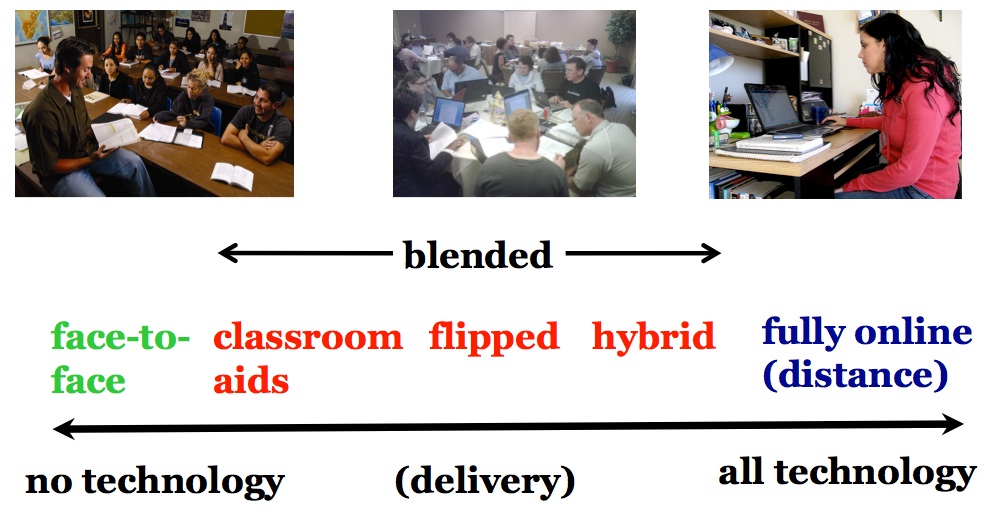https://www.edsurge.com/news/2022-03-28-can-personalized-learning-be-scaled-to-ease-teacher-burdens-and-close-achievement-gaps
McGraw Hill Plus, a new tool, Focusing first on math and then expanding to ELA and science, its objective is to make personalized learning scalable.
Smith: The modern classroom sits at the intersection of blended learning, competency-based learning and personalized learning.
reimagine instructional time and use technology to scale personalized learning.
First, pulling data into one place is the key fundamental driver that will change the teacher workflow. Second, we need to manipulate that data into some advanced data visualization tools, so it’s easy for teachers to understand and use. Third, we need to be able to visualize student performance and take action on it.
Using these data analytics, we can drive personalized learning based on student performance. And the last thing is the automation of teacher workflow.
eachers get data visualization from different sources, such as an adaptive software solution like our ALEKS program, our Redbird Mathematics, or our recently acquired Achieve3000 Literacy.
https://www.edsurge.com/news/2020-12-16-now-is-the-time-to-redefine-learning-not-recreate-traditional-school-online
The vast majority of emergent virtual and hybrid learning models appear to be “stuck at substitution”—that is, they seek to recreate or translate the brick-and-mortar school experience into the cloud without stopping to ask which aspects of those models may not truly serve students in the time of COVID-19 or beyond.
When we say “stuck at substitution,” some readers may recognize the SAMR model of education technology integration. The SAMR framework describes four different levels of technology use, from Substitution to Augmentation, Modification and Redefinition (SAMR). At its most basic level, education technology can be used to simply substitute: to replace traditional methods of teaching and learning with ones that are digitally mediated, but are still based on the same basic structure and pedagogy.

edtech can be used for augmentation, to bring some other affordance or benefit to the teaching and learning experience—for example, when that worksheet becomes a shared Google Doc that allows for collaboration and increased critical thinking.
Redefinition means thinking beyond existing paradigms and schedules that are built for an on-campus experience. It is the opportunity to imagine entirely new ways of teaching and learning—for example, attendance policies that emphasize engagement versus seat time, blended learning models that leverage technology for anywhere, anytime learning, and instructional design that allows increased student choice and participation.
++++++++++++
more on online learning in this IMS blog
https://blog.stcloudstate.edu/ims?s=online+learning
The Difference Between Emergency Remote Teaching and Online Learning
by Charles Hodges, Stephanie Moore, Barb Lockee, Torrey Trust and Aaron Bond Published: Friday, March 27, 2020
https://er.educause.edu/articles/2020/3/the-difference-between-emergency-remote-teaching-and-online-learning
Moving instruction online can enable the flexibility of teaching and learning anywhere, anytime, but the speed with which this move to online instruction is expected to happen is unprecedented and staggering.
“Online learning” will become a politicized term that can take on any number of meanings depending on the argument someone wants to advance.
Online learning carries a stigma of being lower quality than face-to-face learning, despite research showing otherwise. These hurried moves online by so many institutions at once could seal the perception of online learning as a weak option
Researchers in educational technology, specifically in the subdiscipline of online and distance learning, have carefully defined terms over the years to distinguish between the highly variable design solutions that have been developed and implemented: distance learning, distributed learning, blended learning, online learning, mobile learning, and others. Yet an understanding of the important differences has mostly not diffused beyond the insular world of educational technology and instructional design researchers and professionals.
Online learning design options (moderating variables)
Typical planning, preparation, and development time for a fully online university course is six to nine months before the course is delivered. Faculty are usually more comfortable teaching online by the second or third iteration of their online courses.
In contrast to experiences that are planned from the beginning and designed to be online, emergency remote teaching (ERT) is a temporary shift of instructional delivery to an alternate delivery mode due to crisis circumstances. It involves the use of fully remote teaching solutions for instruction or education that would otherwise be delivered face-to-face or as blended or hybrid courses and that will return to that format once the crisis or emergency has abated.
A full-course development project can take months when done properly. The need to “just get it online” is in direct contradiction to the time and effort normally dedicated to developing a quality course. Online courses created in this way should not be mistaken for long-term solutions but accepted as a temporary solution to an immediate problem.
+++++++++++++++++
More on online learning in this IMS blog
https://blog.stcloudstate.edu/ims?s=online+learning
Key Issues in Teaching and Learning
https://www.educause.edu/eli/initiatives/key-issues-in-teaching-and-learning
A roster of results since 2011 is here.
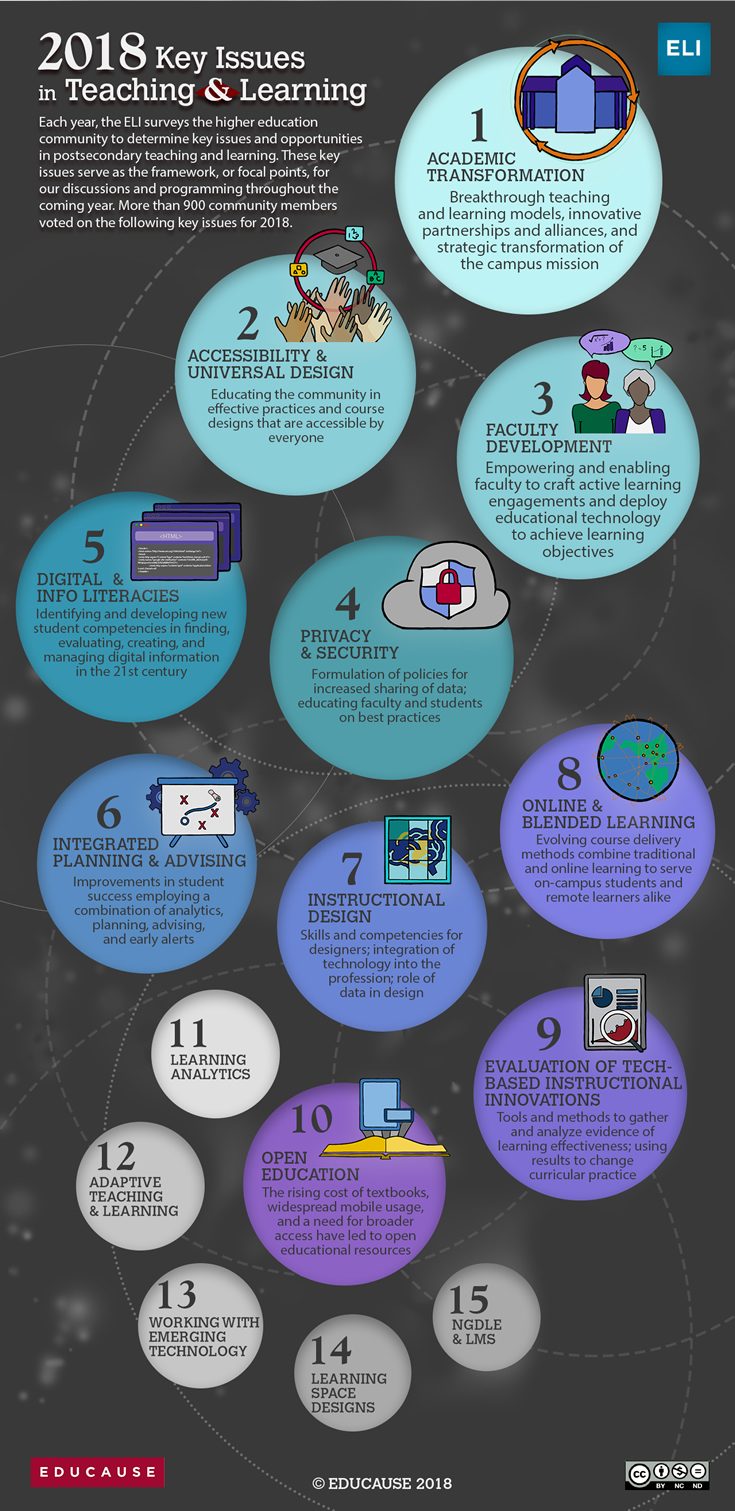
1. Academic Transformation
2. Accessibility and UDL
3. Faculty Development
4. Privacy and Security
5. Digital and Information Literacies
https://cdn.nmc.org/media/2017-nmc-strategic-brief-digital-literacy-in-higher-education-II.pdf
Three Models of Digital Literacy: Universal, Creative, Literacy Across Disciplines
United States digital literacy frameworks tend to focus on educational policy details and personal empowerment, the latter encouraging learners to become more effective students, better creators, smarter information consumers, and more influential members of their community.
National policies are vitally important in European digital literacy work, unsurprising for a continent well populated with nation-states and struggling to redefine itself, while still trying to grow economies in the wake of the 2008 financial crisis and subsequent financial pressures
African digital literacy is more business-oriented.
Middle Eastern nations offer yet another variation, with a strong focus on media literacy. As with other regions, this can be a response to countries with strong state influence or control over local media. It can also represent a drive to produce more locally-sourced content, as opposed to consuming material from abroad, which may elicit criticism of neocolonialism or religious challenges.
p. 14 Digital literacy for Humanities: What does it mean to be digitally literate in history, literature, or philosophy? Creativity in these disciplines often involves textuality, given the large role writing plays in them, as, for example, in the Folger Shakespeare Library’s instructor’s guide. In the digital realm, this can include web-based writing through social media, along with the creation of multimedia projects through posters, presentations, and video. Information literacy remains a key part of digital literacy in the humanities. The digital humanities movement has not seen much connection with digital literacy, unfortunately, but their alignment seems likely, given the turn toward using digital technologies to explore humanities questions. That development could then foster a spread of other technologies and approaches to the rest of the humanities, including mapping, data visualization, text mining, web-based digital archives, and “distant reading” (working with very large bodies of texts). The digital humanities’ emphasis on making projects may also increase
Digital Literacy for Business: Digital literacy in this world is focused on manipulation of data, from spreadsheets to more advanced modeling software, leading up to degrees in management information systems. Management classes unsurprisingly focus on how to organize people working on and with digital tools.
Digital Literacy for Computer Science: Naturally, coding appears as a central competency within this discipline. Other aspects of the digital world feature prominently, including hardware and network architecture. Some courses housed within the computer science discipline offer a deeper examination of the impact of computing on society and politics, along with how to use digital tools. Media production plays a minor role here, beyond publications (posters, videos), as many institutions assign multimedia to other departments. Looking forward to a future when automation has become both more widespread and powerful, developing artificial intelligence projects will potentially play a role in computer science literacy.
6. Integrated Planning and Advising Systems for Student Success (iPASS)
7. Instructional Design
8. Online and Blended Learning
In traditional instruction, students’ first contact with new ideas happens in class, usually through direct instruction from the professor; after exposure to the basics, students are turned out of the classroom to tackle the most difficult tasks in learning — those that involve application, analysis, synthesis, and creativity — in their individual spaces. Flipped learning reverses this, by moving first contact with new concepts to the individual space and using the newly-expanded time in class for students to pursue difficult, higher-level tasks together, with the instructor as a guide.
Let’s take a look at some of the myths about flipped learning and try to find the facts.
Myth: Flipped learning is predicated on recording videos for students to watch before class.
Fact: Flipped learning does not require video. Although many real-life implementations of flipped learning use video, there’s nothing that says video must be used. In fact, one of the earliest instances of flipped learning — Eric Mazur’s peer instruction concept, used in Harvard physics classes — uses no video but rather an online text outfitted with social annotation software. And one of the most successful public instances of flipped learning, an edX course on numerical methods designed by Lorena Barba of George Washington University, uses precisely one video. Video is simply not necessary for flipped learning, and many alternatives to video can lead to effective flipped learning environments [http://rtalbert.org/flipped-learning-without-video/].
Myth: Flipped learning replaces face-to-face teaching.
Fact: Flipped learning optimizes face-to-face teaching. Flipped learning may (but does not always) replace lectures in class, but this is not to say that it replaces teaching. Teaching and “telling” are not the same thing.
Myth: Flipped learning has no evidence to back up its effectiveness.
Fact: Flipped learning research is growing at an exponential pace and has been since at least 2014. That research — 131 peer-reviewed articles in the first half of 2017 alone — includes results from primary, secondary, and postsecondary education in nearly every discipline, most showing significant improvements in student learning, motivation, and critical thinking skills.
Myth: Flipped learning is a fad.
Fact: Flipped learning has been with us in the form defined here for nearly 20 years.
Myth: People have been doing flipped learning for centuries.
Fact: Flipped learning is not just a rebranding of old techniques. The basic concept of students doing individually active work to encounter new ideas that are then built upon in class is almost as old as the university itself. So flipped learning is, in a real sense, a modern means of returning higher education to its roots. Even so, flipped learning is different from these time-honored techniques.
Myth: Students and professors prefer lecture over flipped learning.
Fact: Students and professors embrace flipped learning once they understand the benefits. It’s true that professors often enjoy their lectures, and students often enjoy being lectured to. But the question is not who “enjoys” what, but rather what helps students learn the best.They know what the research says about the effectiveness of active learning
Assertion: Flipped learning provides a platform for implementing active learning in a way that works powerfully for students.
9. Evaluating Technology-based Instructional Innovations

What is the total cost of my innovation, including both new spending and the use of existing resources?
What’s the unit I should measure that connects cost with a change in performance?
How might the expected change in student performance also support a more sustainable financial model?
The Exposure Approach: we don’t provide a way for participants to determine if they learned anything new or now have the confidence or competence to apply what they learned.
The Exemplar Approach: from ‘show and tell’ for adults to show, tell, do and learn.
The Tutorial Approach: Getting a group that can meet at the same time and place can be challenging. That is why many faculty report a preference for self-paced professional development.build in simple self-assessment checks. We can add prompts that invite people to engage in some sort of follow up activity with a colleague. We can also add an elective option for faculty in a tutorial to actually create or do something with what they learned and then submit it for direct or narrative feedback.
The Course Approach: a non-credit format, these have the benefits of a more structured and lengthy learning experience, even if they are just three to five-week short courses that meet online or in-person once every week or two.involve badges, portfolios, peer assessment, self-assessment, or one-on-one feedback from a facilitator
The Academy Approach: like the course approach, is one that tends to be a deeper and more extended experience. People might gather in a cohort over a year or longer.Assessment through coaching and mentoring, the use of portfolios, peer feedback and much more can be easily incorporated to add a rich assessment element to such longer-term professional development programs.
The Mentoring Approach: The mentors often don’t set specific learning goals with the mentee. Instead, it is often a set of structured meetings, but also someone to whom mentees can turn with questions and tips along the way.
The Coaching Approach: A mentor tends to be a broader type of relationship with a person.A coaching relationship tends to be more focused upon specific goals, tasks or outcomes.
The Peer Approach:This can be done on a 1:1 basis or in small groups, where those who are teaching the same courses are able to compare notes on curricula and teaching models. They might give each other feedback on how to teach certain concepts, how to write syllabi, how to handle certain teaching and learning challenges, and much more. Faculty might sit in on each other’s courses, observe, and give feedback afterward.
The Self-Directed Approach:a self-assessment strategy such as setting goals and creating simple checklists and rubrics to monitor our progress. Or, we invite feedback from colleagues, often in a narrative and/or informal format. We might also create a portfolio of our work, or engage in some sort of learning journal that documents our thoughts, experiments, experiences, and learning along the way.
The Buffet Approach:
10. Open Education

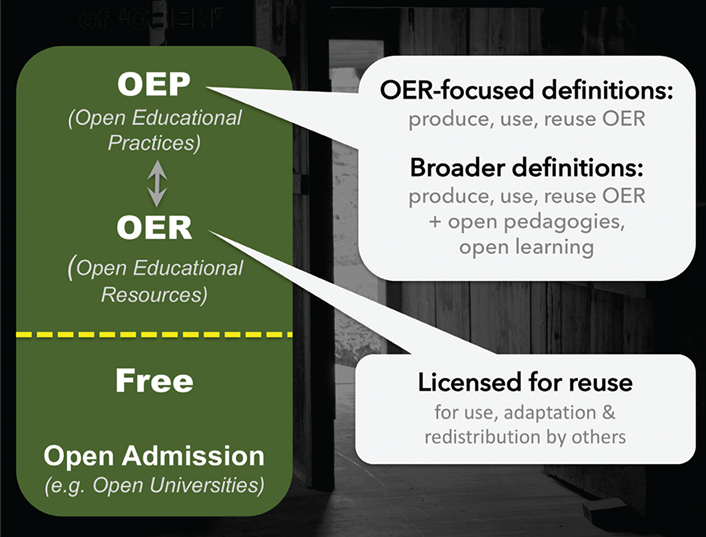
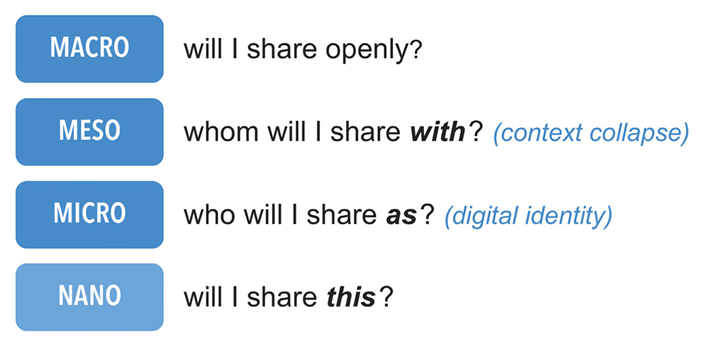
11. Learning Analytics
12. Adaptive Teaching and Learning
13. Working with Emerging Technology
In 2014, administrators at Central Piedmont Community College (CPCC) in Charlotte, North Carolina, began talks with members of the North Carolina State Board of Community Colleges and North Carolina Community College System (NCCCS) leadership about starting a CBE program.
Building on an existing project at CPCC for identifying the elements of a digital learning environment (DLE), which was itself influenced by the EDUCAUSE publication The Next Generation Digital Learning Environment: A Report on Research,1 the committee reached consensus on a DLE concept and a shared lexicon: the “Digital Learning Environment Operational Definitions,
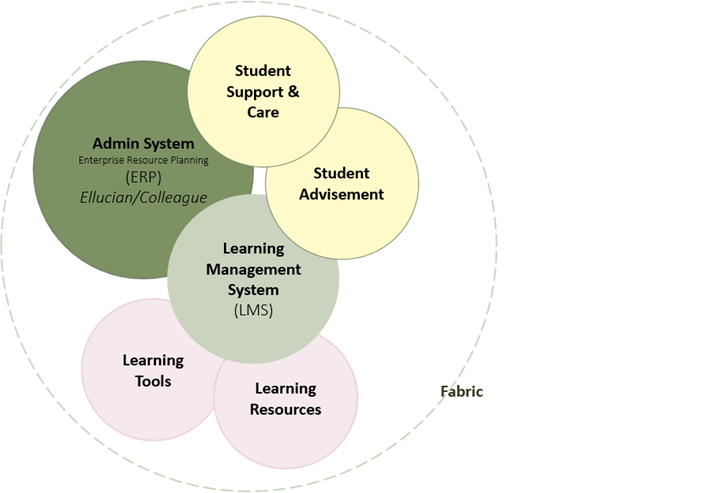
Online learning here is used as a blanket term for all related terms:
- HyFlex courses – hybrid + flexible
“hybrid synchronous” or “blended synchronous” courses
- Definition:
The HyFlex model gives students the choice to attend class in person or via synchronous remote stream and to make that choice on a daily basis. In other words, unlike online and hybrid models which typically have a fixed course structure for the entire semester, the HyFlex model does not require students to make a choice at the beginning of term and then stick with it whether their choice works for them or not; rather students are able to make different choices each day depending on what works best for them on that day (hence the format is “flexible”) (Miller and Baham, 2018, to be published in the Proceedings of the 10th International Conference on Teaching Statistics).
- Definition from Horizon Report, HIgher Ed edition, 2014. p. 10 integration of Online Hybrid and Collaborative Learning
- Definition from U of Arizona (https://journals.uair.arizona.edu/index.php/itet/article/view/16464/16485)
Beatty (2010) defines HyFlex courses to be those that “enable a flexible participation policy for students whereby students may choose to attend face-to-face synchronous class sessions or complete course learning activities online without physically attending class”
- Online courses
- Definition
Goette, W. F., Delello, J. A., Schmitt, A. L., Sullivan, J. R., & Rangel, A. (2017). Comparing Delivery Approaches to Teaching Abnormal Psychology: Investigating Student Perceptions and Learning Outcomes. Psychology Learning and Teaching, 16(3), 336–352. https://doi.org/10.1177/1475725717716624
p.2.Online classes are a form of distance learning available completely over the Internet with no F2F interaction between an instructor and students (Helms, 2014).
- https://www.oswego.edu/human-resources/section-6-instructional-policies-and-procedures
An online class is a class that is offered 100% through the Internet. Asynchronous courses require no time in a classroom. All assignments, exams, and communication are delivered using a learning management system (LMS). At Oswego, the campus is transitioning from ANGEL to Blackboard, which will be completed by the Fall 2015 semester. Fully online courses may also be synchronous. Synchronous online courses require student participation at a specified time using audio/visual software such as Blackboard Collaborate along with the LMS.
- Web-enhanced courses
Web enhanced learning occurs in a traditional face-to-face (f2f) course when the instructor incorporates web resources into the design and delivery of the course to support student learning. The key difference between Web Enhanced Learning versus other forms of e-learning (online or hybrid courses) is that the internet is used to supplement and support the instruction occurring in the classroom rather than replace it. Web Enhanced Learning may include activities such as: accessing course materials, submitting assignments, participating in discussions, taking quizzes and exams, and/or accessing grades and feedback.”
Goette, W. F., Delello, J. A., Schmitt, A. L., Sullivan, J. R., & Rangel, A. (2017). Comparing Delivery Approaches to Teaching Abnormal Psychology: Investigating Student Perceptions and Learning Outcomes. Psychology Learning and Teaching, 16(3), 336–352. https://doi.org/10.1177/1475725717716624
p.3.
Helms (2014) described blended education as incorporating both online and F2F character- istics into a single course. This definition captures an important confound to comparing course administration formats because otherwise traditional F2F courses may also incorp- orate aspects of online curriculum. Blended learning may thus encompass F2F classes in which any course content is available online (e.g., recorded lectures or PowerPoints) as well as more traditionally blended courses. Helms recommended the use of ‘‘blended’’ over ‘‘hybrid’’ because these courses combine different but complementary approaches rather than layer opposing methods and formats.
Blended learning can merge the relative strengths of F2F and online education within a flexible course delivery format. As such, this delivery form has a similar potential of online courses to reduce the cost of administration (Bowen et al., 2014) while addressing concerns of quality and achievement gaps that may come from online education. Advantages of blended courses include: convenience and efficiency for the student; promotion of active learning; more effective use of classroom space; and increased class time to spend on higher- level learning activities such as cooperative learning, working with case studies, and discuss- ing big picture concepts and ideas (Ahmed, 2010; Al-Qahtani & Higgins, 2013; Lewis & Harrison, 2012).
Although many definitions of hybrid and blended learning exist, there is a convergence upon three key points: (1) Web-based learning activities are introduced to complement face-to-face work; (2) “seat time” is reduced, though not eliminated altogether; (3) the Web-based and face-to-face components of the course are designed to interact pedagogically to take advantage of the best features of each.
The amount of in class time varies in hybrids from school to school. Some require more than 50% must be in class, others say more than 50% must be online. Others indicate that 20% – 80% must be in class (or online). There is consensus that generally the time is split 50-50, but it depends on the best pedagogy for what the instructor wants to achieve.
Backchannel and CRS (or Audience Response Systems):
https://journals.uair.arizona.
More information:
Blended Synchronous Learning project (http://blendsync.org/)
https://journals.uair.arizona.edu/index.php/itet/article/view/16464/16485
https://www.binghamton.edu/academics/provost/faculty-staff-handbook/handbook-vii.html
VII.A.3. Distance Learning Courses
Distance learning courses are indicated in the schedule of classes on BU Brain with an Instructional Method of Online Asynchronous (OA), Online Synchronous (OS), Online Combined (OC), or Online Hybrid (OH). Online Asynchronous courses are those in which the instruction is recorded/stored and then accessed by the students at another time. Online Synchronous courses are those in which students are at locations remote from the instructor and viewing the instruction as it occurs. Online Combined courses are those in which there is a combination of asynchronous and synchronous instruction that occurs over the length of the course. Online Hybrid courses are those in which there is both in-person and online (asynchronous and/or synchronous) instruction that occurs over the length of the course.
